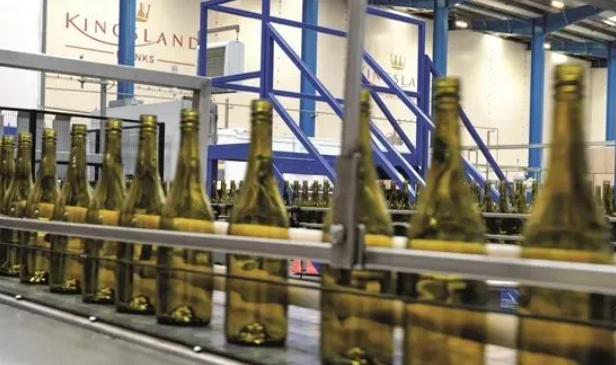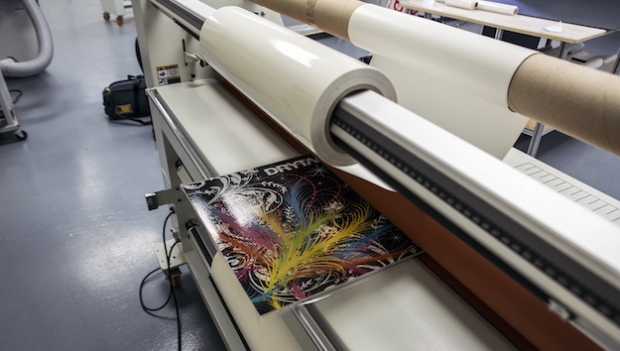
The global alcohol packaging market was valued at $69.2bn in 2024 and is estimated to grow at a CAGR of 4.7% from 2025 to 2034, according to Global Market Insights.
That is a lot of packaging! The research specialist said sustainability and reduction of carbon inspire innovation in packaging for alcoholic beverages.
As with all brands, the alcohol companies put an emphasis on waste reduction as ever-increasing compliance and legislation impacts the sector.
Added to this is consumer demand on eco-friendly products – with recycling and circularity a key area.
Integrating accessible QR codes within product packaging for alcohol, including wines and spirits, continues to grow.
IWSR, the global data, analytics and insights provider for the beverage alcohol industry, says wine-drinking occasions are evolving, with Gen Z moving away from the daily mealtime occasion.
It added that some wine brands have responded by offering different formats for more versatile consumption occasions – from RTDs to bag-in-box and eco-friendly resealable aluminium bottles, brands are exploring both smaller and larger formats, on-the-go packaging, and increasingly sustainable materials.
Kingsland Drinks agreed that the wine category continues to attract a younger demographic, and so there appears a shift to less traditional labels, language and iconography to acknowledge that Gen Z don’t relate to the same cues as the generation before them.
The filler and brand owner said there has been more scrutiny and pressure on the industry to bring down bottle weights for still wine, including during the sustainable wine round table, where an agreement was made by key UK wine retailers and supermarkets to reduce their average 750ml still wine bottle weight to less than 420g by the end of 2026.
Jo Taylorson, head of marketing and product management, Kingsland Drinks, said: “It would be remiss to overlook the impact duty hikes are having on the industry – and in turn the consumer – and we’re only just seeing the repercussions of that.
“Furthermore, the year has been defined by a district lack of clarity; The proposed EPR scheme will go live in just a few short months, and we don’t really know what this looks like in real terms yet. Much of this year has been about preparing for the unknown. Similarly, we continued to navigate PRNs and had the prospect of the DRS looming for much of 2024.”
Bottle is still king
Peter Stanbury, director, research and standards, of independent global platform Sustainable Wine Roundtable (SWR), is an expert in this field.
He said the glass bottle remains the predominant packaging format, and that is ‘not going to change much’.
“However, there has been an increasing amount of innovation and ‘let’s try things out’. Bogle came up with an aluminium bottle, and in the UK both Waitrose and M&S have started packing small serve (187ml) in cans, which is really interesting.
Canned wine was also sold at Glastonbury and Wimbledon and seems to be building a role as a convenient serve size. There has also been more exploration of plastic bottles, though there are issues here around recycling rates in different markets.”
He said the Nordic markets continue to be much further ahead, with a very high proportion of their basic wines in alternative formats such as bag-in-box. On the other hand, some other markets – China and bits of the US, for example – there is still a focus on heavier glass.
Packaging developments
Global Market Insights said as manufacturers respond to increased consumer interest in being environmentally friendly, alcohol brands are ‘transitioning to metal packaging to achieve their goals of sustainability’.
The challenge lies in the offsetting of the different sustainability profile of different packaging types. While glass has a significant carbon impact, but there are issues to address in relation to other packaging types.
Plastic bottles have a much lower carbon impact but unless they are recycled, they contribute to the challenge of plastics pollution.
Glass bottle makers continue to push forward their work to reduce the carbon impact of their production. Whilst genuinely carbon-neutral furnaces are a long way off, Stanbury said companies like Encirc, Verallia and O-I are being very proactive in working with SWR to move to lighter-weight bottles, which is very welcome.
Taylorson from Kingsland said the conditions for the still-emerging bag-in-box wine format are ‘ripe for success’, with wine producers, brand owners and retailers investing in quality of liquid, innovative packaging and campaigns that educate the shopper on the format’s virtues.
She said the industry still needs to invest more in communicating the quality and longer shelf life of bag in box wines, their value to cash conscious shoppers and how they meet the needs of those moderating alcohol consumption, but it’s in motion.
“Against the backdrop of the impending DRS, it’s an increasingly attractive proposition for the drinks trade. As an industry we must embrace what they offer; recyclability, affordability, and longer lasting wine. New consumers to the bag-in-box category realise the benefits in terms of convenience, freshness, quality and some environmental benefits to glass, such as lower CO2 emissions. There is also more we can do as an industry to ‘premiumise’ bag-in-box wines, using printing techniques and smaller formats.”
Taylorson said multiple retail chains across the UK and Europe are now specifying lighter weight bottles for wine and imposing weight limits on their suppliers: “We expect retailers and brands to invest further in communicating their sustainability credentials with a focus on every element of their production, sourcing, supply chains, partnerships and beyond from the outset to ensure sustainable decisions are made at every point in the production process.”
Legislative changes
Stanbury said EPR has had a very significant impact as it places a clear financial cost on heavier packaging.
“This has meant that the sustainability teams have had a much easier job to push for change as savings in packaging, and therefore in cost, go straight through to the bottom line. This is probably the single biggest development driving choices in wine packaging at the moment. However, other regulatory issues, for example Scope 3 reporting is also having a significant impact. Even though it looks as if the EU will be rolling out some of its reporting requirements rather more slowly than initially planned, we can expect these too to have a positive impact in the sustainability impacts of wine packaging.”
A raft of new regulations coupled with the structure of duty hikes means that more clever marketing and creativity on pack can be expected in 2025.
Taylorson from Kingsland said: “We expect a simplification of label design, in place of detailed, fussier creative, and more plays to popular culture, films and music to be visible on labels across the category as the industry works to engage shoppers and marry message, duty, price, and transparency on pack.”
She said in the coming years there will be a considerable and visible push to make light-weighting glass bottles standard: “Reducing the weight of the bottle just a little can have a significant impact on the wine’s carbon footprint, offer substantial energy savings, and use less raw material.”
She added: “Right now, the only thing that is clear is a greater cost to drinks companies and the wider industry – which is something nobody needs in the current market conditions. Defra needs to engage with the drinks industry to provide clarity across the board and enable us to effectively prepare for this big shift.”
2025 forecast
Sustainable Wine Roundtable’s Stanbury added that the Bottle Weight Accord has ‘really taken off’, with about 25 companies involved – including growers, traders and retailers.
“Between them they make and sell around two billion bottles of wine. We’re seeing new companies join all the time – it has become something of an industry standard. We are in the process of doing the research to launch a sparkling wine bottle weight accord. Obviously, this is a bit more complicated than still wines because of the differing pressures of different types of sparkling wines.”
Kingsland said wine has the room to keep pushing boundaries to engage with the less traditional consumers. It has made some serious strides, with bag-in-box formats making it to the mainstream among other formats and being more experiential in the way it engages consumers via the label.
“While the category is certainly more innovative than ever before, if it is to truly capture a younger demographic and expand its appeal, it needs to continue to evolve its more playful side,” said Taylorson.
“Spirits should be looking at becoming more sustainable, whilst retaining their premium feel – something the wine industry has worked hard to do and done so successfully. The weight of glass in the spirits category could certainly be improved too. The agility of the spirits category and the freedom the less highly regulated spirits enjoy, coupled with a consumer that is open to different formats and experiences, means that spirits are really well-positioned to lead the way in sustainability.”
—————————————————————
THE SUSTAINABLE WINE ROUNDTABLE
The Sustainable Wine Roundtable (SWR), an independent global platform, promotes sustainability in the wine industry through collaboration and in late 2023 set up the Bottle Weight Accord (BWA).
The Accord was based on in-depth research undertaken by SWR in 2022-23.
Goals include removing heavy bottles, and light-weighting own-brands. Participants have specifically committed to reducing the average weight of their 750ml still wine bottles to below 420g by the end of 2026.
Each BWA member will introduce phased reductions and report progress every six months.
SWR said glass bottles significantly contribute to wine’s carbon footprint: “Our research indicates that roughly half of the carbon impact of wine can be attributed to the bottle. By reducing bottle weight, we can substantially lower this impact. Our findings also demonstrate that bottle weight has little to no meaningful influence on consumer purchasing decisions – challenging a common misconception that favours heavier bottles. Light-weighting wine bottles therefore presents a clear opportunity to reduce emissions across the industry.”
Accolade Wines, Albert Heijn, and Botanica Wines joined the scheme recently, adding to other members including the Catena Institute of Wine, Vina Concha y Toro, Boutinot Wines, Tesco, Endeavour Wines from Australia and the Systembolaget monopoly in Sweden.
Ginny Povall, winemaker at Botanica Wines explained the reasons for joining the BWA: “As part of my commitment to being carbon-neutral, I discovered that tackling indirect Scope 3 carbon emissions from packaging had a bigger impact on reducing my carbon footprint than my substantial capital investments in our solar plant and electric vehicle. So I prioritised reduced bottle weights for all of my bottlings starting in 2023, and now 100% of wines bottled in 2024 are in lightweight bottles. My hopes in joining the Accord are to make more consumers aware of how big of an impact lightweight bottles have on a winery’s carbon footprint, and try to get support to push our local glass manufacturer to produce a lightweight option.”
Accolade Wines has also embraced lightweighting as a sustainability priority. Emma Gibson, sustainability manager, said: “Glass lightweighting has been an important focus for Accolade Wines since we began working on this initiative in 2022. We are keen to be a part of the Bottle Weight Accord and to share best practice within this important area and to understand how we can overcome the remaining hurdles.”
Barbara Houtzager, sourcing manager for wine, Albert Heijn, added: “More sustainable packaging is one of our goals, so the signing of the accord strengthens our strategy and helps us to reach lower bottle weights.”
Reflecting on the Accord’s progress, Peter Stanbury, research director, SWR, said: “As the Accord moves into its second year, the next steps will involve supporting members in reporting their progress toward the 420g target. To streamline this process, the SWR has developed user-friendly reporting templates and is creating additional resources to help smaller producers like Botanica Wines source lightweight glass and navigate reporting requirements.”







